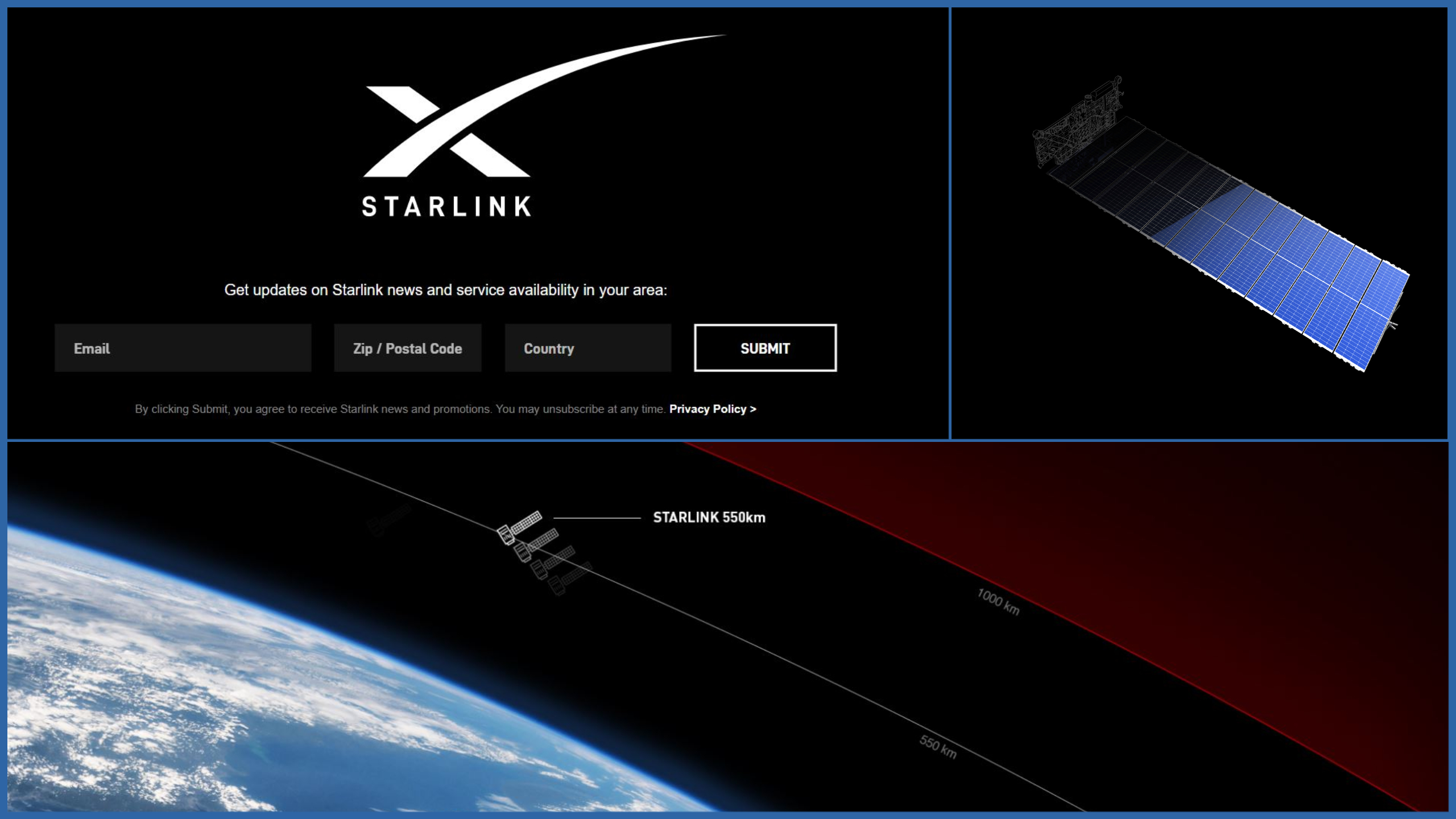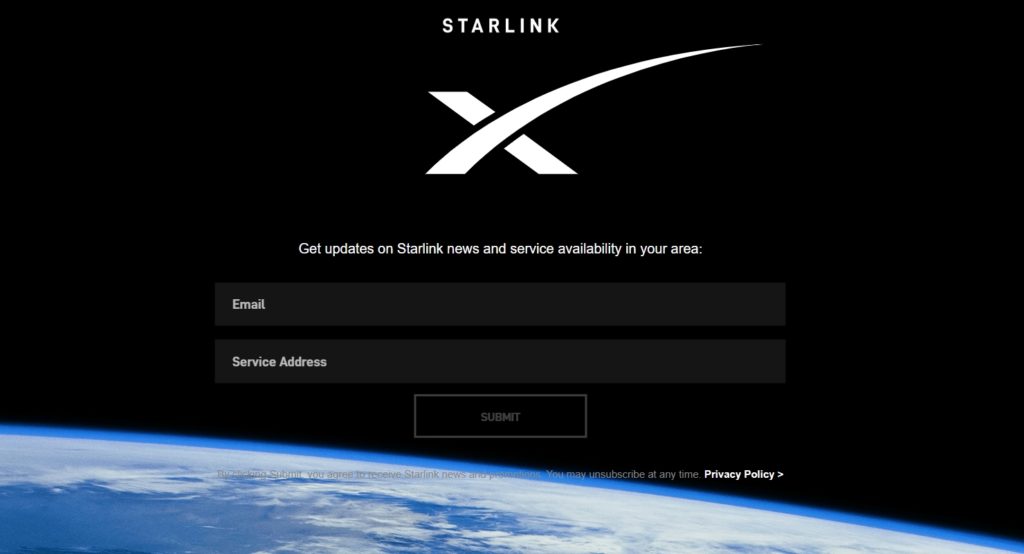
Update: If you signed up using your email and zip/postal code, Starlink should have emailed you requesting your service address. Your invitation code is unique, so make sure you update to include your service address for the most accurate availability update.

Beta Sign Up for SpaceX Satellite Internet from Starlink
You can sign up to find out when Starlink internet is available in your area. Once Starlink is go for launch in your area, get notified by Starlink’s official website: Starlink

IRL Iron Man, Elon Musk, is the tech hero rescuing netizens tired of sub-par internet speeds and shoddy connection reliability. Enter Starlink, the greatest thing for the everyhuman to come out of SpaceX to date: Satellite internet.
Red Tape that Would Make Jean Luc Picard Face-Palm
SpaceX still needs to get approvals to provide internet services; there will be battles fought and corporate wars waged over hefty dollar signs $$ in losses by competitors like Spectrum, Comcast, and Charter Communications. Thankfully, the awesomeness that is Star Trek-worthy 21st century internet access for all is backed by the tech world juggernaut Elon Musk, and with users already clamoring to sign up for the beta, internet speeds will very soon go where no one has gone before: high speed satellite for all.
Exciting news to upgrade to internet from the sky; no more pipes and wires running underground to bring internet to homes and businesses.

Advanced Science and Technology for Reliable Satellite Internet
The state-of-the-art satellites in orbit by SpaceX and Starlink aren’t just beacons of hope for reliable high-speed internet; they were built with efficiency and dependability in mind. Below are human-friendly translations of the science behind Starlink satellite tech for the geek that wants to understand more.
- Less Mass, More Compact: Each satellite weighs approximately 260kg and features a compact, flat-panel design that minimizes volume, allowing for a dense launch stack to take full advantage of the launch capabilities of SpaceX’s Falcon 9 rocket.
- Geek translation: as satellites go, these are lighter and more efficient in size. This also means it’s easier to launch more satellites in the future without overly expensive heavy weight launch costs or taking up too much real estate in the atmosphere.
- Antennas: With 4 powerful phased array antennas on each satellite, an enormous amount of throughput can be placed and redirected in a short time, for an order of magnitude lower cost.
- Geek translation: send and receive your internet data very fast at an extremely efficient cost. Internet connection and speed is easily adjusted with this tech (by robots/AI/geeks) to ensure reliable speeds and connectivity.
- Singular Solar Array: Starlink satellites feature a single solar array, significantly simplifying the system; solar cells are standardized, and easy to integrate into the manufacturing process.
- Geek translation: standard and easy satellite hardware means easier and faster to build and launch more compact satellites (perhaps for someone or a business’ own dedicated satellite).
- Ion Propulsion Systems: Starlink satellites are equipped with efficient ion thrusters powered by krypton that enable the satellites to orbit raise, maneuver in space, and deorbit at the end of their useful life. Starlink is the first krypton propelled spacecraft ever flown.
- Geek translation: Starlink satellites have especially advanced propulsion technology that enables them to reposition or decommission to home, as needed. Satellite maneuverability is important if there are issues with becoming dragged by the atmosphere or possible collision with other satellites. Superman would be proud. (Side note: Krypton is the fictional home world of Superman AKA Clark Kent, but is also a chemical element. Krypton (Kr) is a “colorless, odorless, tasteless noble gas that occurs in trace amounts in the atmosphere and is often used with other rare gases in fluorescent lamps.” Source)
- Star Tracker: Custom-built in-house navigation sensors tell each satellite its attitude, which helps enable precision placement of broadband throughput.
- Geek translation: SpaceX and Starlink have their own navigation technology back on Earth that ensures satellites are positioned for the best internet connection and reliability.
- Autonomous Collision Avoidance: Starlink satellites utilize inputs from the Department of Defense’s debris tracking system to autonomously perform maneuvers to avoid collisions with space debris and other spacecraft. This capability reduces human error, allowing for a more reliable approach to collision avoidance.
- Geek translation: military-grade AI helps satellites to avoid destruction or damage from debris. This means you can worry less about your satellite encountering its doom in outer space. The automatic avoidance is an advanced feature by Starlink.
Leave a Reply